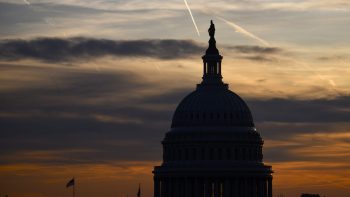Government can be main student lender
TEXT OF INTERVIEW
Bill Radke: For college-bound students and parents, this is Fafsa time — that’s the Free Application for Federal Student Aid. In other words, the incredibly complicated form you have to fill out to get financial aid form the government. Marketplace’s economics correspondent Chris Farrell joins us. Chris, President Obama says he want to overhaul the financial aid system — he wants to cut out the banks. What is his plan?
Chris Farrell: Right, so we have this system, and it’s called the Family Education Loan Program. And you can get your federally subsidized student loan through the banking industry. And remember, the government’s underwriting the risk here, and the government’s also paying the interest rate while you;re in college. And it’s been about a $4 billion a year subsidy. But the government’s had this program since the early years of the Clinton administration where you just borrow directly from the Department of Education. So you’re not paying out any subsidy to private lenders, there’s no extra $4 billion going out there. And what the Obama administration is saying is let’s phase out the subsidies, save the taxpayers about $50 billion over the next decade, and we’re going to have students take their federally subsidized loans directly from the Department of Education.
Radke: If the private system is so inefficient, Chris, why do we do it this way?
Farrell: It’s this term called, this really ugly term: privatization. Privatization has kind of turned into this rigid ideology, and it’s this notion that the private sector is always more efficient than government. Not necessarily true, and I think the student loan program is a classic example. There’s every reason to believe that the private sector’s made a nice little profit off the U.S. taxpayer for being less efficient.
Radke: So you’re saying the last thing we need right now is helping out banks. What a crazy idea!
Farrell: Hahaha. Well, let’s get banks back into the business of actually making loans and evaluating risk. And yes, I know — at this particular point in time, it’s probably a little bit strange or a little bit of a detour to be beating up on the government, the taxpayer, throwing extra money into the system. Nevertheless, we are going to come out of this, so let’s set up a program now so that when it’s time for students to borrow for college, they just do it from the Department of Education directly from the government. If we’re going to subsidize it, let’s do it that way.
Radke: Are you sure you want taxpayers to take on even more risky loans, Mr. Farrell?
Farrell: You know, the default rate is a little bit higher than the published default rate on student loans, and boy if we have another discussion, I think we’ve seen the bursting of a student loan-lending bubble as many other bubbles have burst. Students are still going to borrow. So, we’re going to partially subsidize those loans, let’s do it the most effcient way possible. I’ve never quite understood this notion of why reward inefficiency.
Radke: Marketplace economics correspondent Chris Farrell. Thank you.
Farrell: Thank you.
There’s a lot happening in the world. Through it all, Marketplace is here for you.
You rely on Marketplace to break down the world’s events and tell you how it affects you in a fact-based, approachable way. We rely on your financial support to keep making that possible.
Your donation today powers the independent journalism that you rely on. For just $5/month, you can help sustain Marketplace so we can keep reporting on the things that matter to you.

















